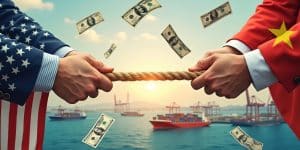
Christopher Kuehl
Managing Director • Armada
The Good, Bad and Ugly of Reshoring – For some twenty or thirty years there was a consistent lament that manufacturing was abandoning the US. There was a virtual stampede out of the US as manufacturers and others sought lower labor and production costs by shifting production overseas or sourcing from these low cost platforms. China exploded into becoming the “manufacturer to the world” as they combined heavy investment in infrastructure with the advantages of low cost labor, limited regulation and low taxes. The US was not a particularly friendly location for many producers (and neither was Europe). In the 1990s the US manufacturing sector lost over 20 million jobs. To be honest a lot of that loss was attributable to the development of robotics and technology but the replacement of US workers with foreign workers was a major factor as well. The mantra of nearly every politician for those thirty years was “bring production back” but nothing substantial was ever tried. There was no relief from regulation – rather the rules expanded and made production ever more complex. There was no attempt to deal with the labor shortage – no significant investment in trade schools or training. Taxes stayed high.
Today there is more enthusiasm for reshoring than has been seen in decades. It is on everybody’s agenda as supply chain managers all start to seriously rethink the supply chain. Fully 90% of them have indicated they are altering the patterns they have depended on for years – bringing production to other nations and bringing production back to the US or at least near the US (Mexico and Canada). The new watchword for overseas expansion is “friend shoring” – moving to countries that are close to the US rather than nations the US competes with in everything from business to geopolitics. How real is the movement back to the US? What will drive this shift and what will inhibit it?
The drivers have been pretty easy to identify of late. The relationship between the US and China has been deteriorating steadily for the last few years and there is little expectation of an improvement. Of late there has been the disastrous “zero tolerance” policy that has significantly eroded the ability of China to keep supplying the world with those consumer goods. At the same time the US has improved its ability to deploy technology and robotics and that has allowed the US manufacturer to be competitive against many of the low-cost producers. The desire to tighten supply chains and reduce the stress of shortages and outages has come to dominate. This is the good news. The bad news is that reshoring is facing challenges as well and some will be very difficult to overcome.
At the top of the list of issues is labor. There is nothing surprising about this as the labor shortage has been affecting almost every sector of the economy – manufacturing, construction, health care – you name it. The US has been ignoring the reality of an aging workforce for generations – 73 million Boomers will have hit retirement age by the year 2030. There are not enough workers to fill the jobs on offer now – much less accommodate a major expansion of reshoring – especially given the fact these reshored jobs are largely more technical and specialized. An even bigger issue will be inflation. The motivation for the exodus to low cost production platforms in the 1990s was to export inflation. This allowed the consumer in the US access to low prices for a whole range of goods and for the last three decades there was very little inflation at any level. With the return to the US comes the return of US pricing. Wages will be higher, regulatory costs will be higher, taxes will be higher, transportation costs will be higher, energy costs will be higher. Basically, every cost will go up. The consumer will no longer have the ability to dodge higher costs. They will get better supply and probably greater reliability but at a cost. The upside is that more people will be paid higher wages but those that are not participating in that increase will be facing more financial limitations.
Recent Posts
- The All Powerful and Influential Automotive Sector July 10, 2025
- Tariff Fatigue June 24, 2025
- Obtaining Financial Records from Hesitant Customers May 29, 2025
- What Happens Next? May 8, 2025
- Three Reasons to Ignore Recession Talk (and One Reason Not to) April 24, 2025
- Stability in Uncertain Times: Insights on Small Business Performance and Market Trends March 26, 2025











